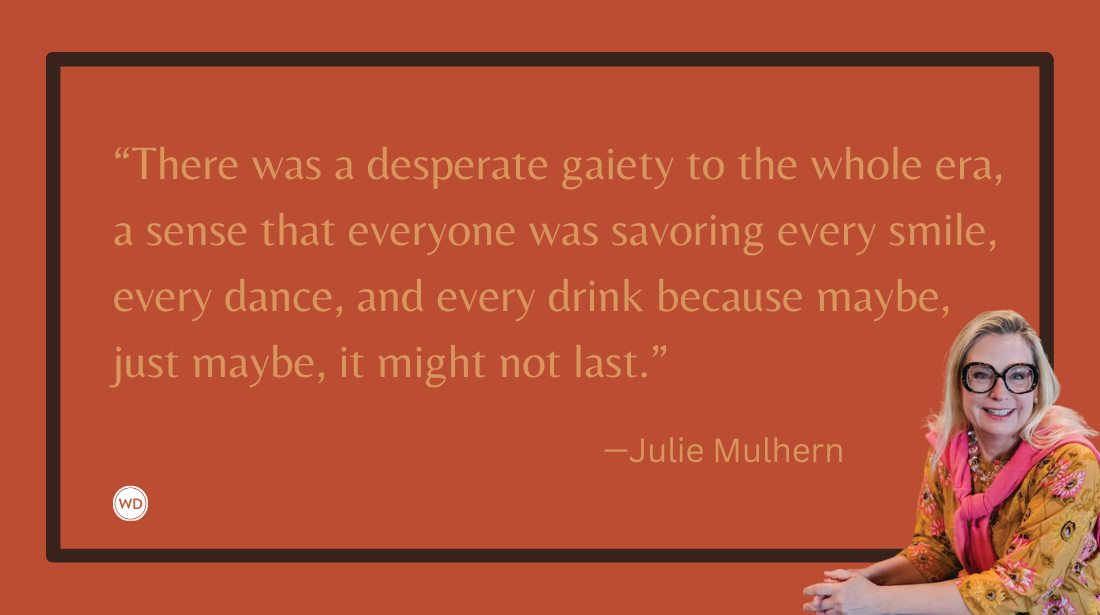7 Tips for Writing Supernatural Horror
Author Nick Medina shares seven tips for writing supernatural horror that will scare (and possibly scar) readers.
Give me ghosts, werewolves, angels, vampires, and demons. I’ve been reading supernatural horror since I was a kid, and now I incorporate supernatural horror elements in much of what I write. I love how diverse supernatural horror is and how it can be used in so many ways to serve a story.
In my debut novel, Sisters of the Lost Nation, I use supernatural elements to inspire fear while providing the protagonist with opposition. My tips for writing supernatural horror are based on how I use it in the book. Here they are.
7 Tips for Writing Supernatural Horror
Be original.
Put your own spin on supernatural tropes and creatures, or create something new. Scare (perhaps scar) readers with something they haven’t already recovered from. The first vampire novel I read scared the heck out of me, in part because I was too young for that book, but mostly because vampires were still new to me. I hadn’t come to love them yet.
In Sisters of the Lost Nation, 17-year-old Anna Horn is haunted by a disembodied head that rolls behind her—chasing her—when she walks home from work at night. Since the rolling head comes from Native American mythology, I figured there was a good chance it would be new to many readers, and I’ve since heard that it’s horrified quite a few of them.
Get to know your supernatural element well.
What’s its history? Its origin? The supernatural element’s backstory might become the lore that fuels the rest of your story, or, at the least, the hauntings within it. Give the supernatural element a motive. Give it a weakness or a fatal flaw, too, though you’ll probably want to keep this characteristic under wraps until the story’s protagonist figures it out in the end.
The opening chapter of Sisters of the Lost Nation establishes that the rolling head came into existence after someone dug up the bones of Chief Hilaire, the last official chief of the Takoda Tribe. Anna’s uncle tells her that the spirit of a chief is a powerful thing, and that since it’s been disturbed, its skull has become a head again, ravenous for revenge. He says the head will eat anyone it encounters, that he’s seen it, and that it might be closer than Anna thinks, providing the basis for a childhood fear that lingers within Anna, and which comes to haunt her even more when strange things start to happen around her.
Give purpose to your supernatural element.
Use it to make scenes scary, of course, but give its presence greater significance by treating it as impetus for character introspection or growth. The rolling head in Sisters of the Lost Nation is there to evoke uneasiness, and, more importantly, to make Anna question her state of mind, her beliefs, and even her sanity, ultimately driving her to make discoveries about herself that help her on her quest to uncover the truth behind the distressing disappearance of her little sister Grace, along with other young women and girls from her tribe.
Make the unbelievable believable.
The backstory or lore surrounding your supernatural element might be incredible, thereby making it hard for readers (and even your characters) to accept. Overcome this by providing evidence suggesting that there might really be something out there we know nothing about.
In a survey of 1,000 Americans, YouGov found that eight to nine percent believe in the existence of werewolves and vampires. I’m not a believer, yet when I read a finely crafted tale about these creatures, I believe in the reality on the page, and that’s the goal—to get readers to forget their reality and buy into yours, or more accurately, that of your characters.
Anna’s Uncle Ray gives her plenty of reasons to believe in the rolling head when she’s just seven years old. He’s a gravedigger, he found the chief’s unearthed bones, he says he saw the rolling head, and he concludes that it must have eaten Miss Shelby, who recently went missing on the tribe’s reservation. Altogether, Anna has reason to be afraid.
Don’t over-explain.
Give your characters and readers reason to buy into the supernatural element without giving away its mystery. Considering your story, answer enough of the questions you’ve raised to satisfy your readers, but don’t feel obligated to answer every question. Leave readers wondering, speculating, worrying, and remembering what you wrote.
I don’t reveal what happened to Miss Shelby, or who dug up the chief’s bones in Sisters of the Lost Nation (though you can get those answers in my new book, Indian Burial Ground). I don’t reveal if the rolling head is real or not either. People have asked me, but I don’t think it’s up for me to decide.
Check out Nick Medina's Indian Burial Ground here:
(WD uses affiliate links)
Build tension and suspense.
Restraint is often key here. Don’t overdo it by bringing readers face to face with your supernatural element on every page. Keep these meetings limited to essential moments in the plot. This will keep readers in suspense, wondering when and where the next unnerving incident will take place.
In the meantime, throw in subtle references and reminders to keep readers on their toes, like when Anna hears a rustle in the brush along the road while walking home from school, or when she mistakes a scurrying raccoon for a rolling head.
Don’t wimp out with your protagonist.
If you have a fantastic supernatural element that inspires fear and which will contribute to, if not completely cause, the horror in your story, you’ll need an even stronger protagonist to stand up to it. Craft instances and interactions within your story that illustrate the strengths of your protagonist while giving readers reasons to care about the character.
Anna is described as an underdog from the start, someone her classmates vote homecoming king as a cruel prank because she’s not what they consider normal. But Anna has close bonds with her family. And she’s fiercely loyal, even when those she’s loyal to aren’t in return. She never gives up on finding her sister, and the more she searches, the more she finds out about herself.
A Chicago native, Nick Medina has gone in search of Resurrection Mary, the “Italian Bride,” the “Devil Baby,” and other Windy City ghosts. A graduate of DePaul University, he has degrees in organizational and multicultural communication, and has worked as a college instructor. He enjoys playing guitar, listening to classic rock, and watching Svengoolie on Saturday nights. Sisters of the Lost Nation was his debut novel. Learn more online at nickmedina.net. (Photo credit: Ashley Suttor)









